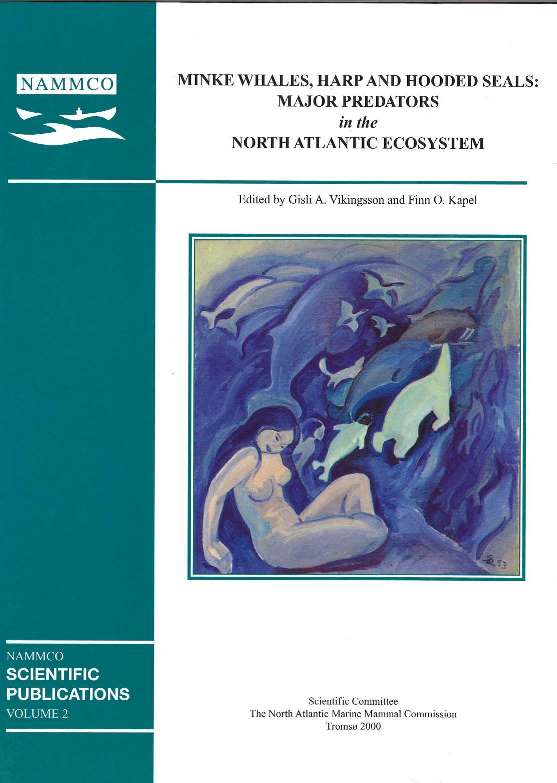Feeding habits of harp (Phoca groenlandica) and hooded seals (Cystophora cristata) during late winter, spring and early summer in the Greenland Sea
DOI:
https://doi.org/10.7557/3.2970Keywords:
harp seals, Phoca groenlandica, hooded seals, Cystophora cristata, feeding, diet, prey, Greenland SeaAbstract
Diet data were collected in the Greenland Sea pack ice (the West Ice) from March to June from harp seals (Phoca groenlandica) in 1987, 1990-1992 and 1997, and from hooded seals (Cystophora cristata) in 1992 and 1994, during Soviet Russian commercial sealing and on Norwegian scientific expeditions. The majority of both harp and hooded seal stomachs were empty but intestinal contents were found in most of the seals. The harp seal diet was totally dominated by the amphipods Parathemisto sp. and Gammarus sp., but krlll (Thysanoessa sp.) and polar cod (Boreogadus saida) were also eaten quite frequently. Hooded seals had been feeding mainly on the squid Gonatus fabricii, which was found most frequently in the intestines, but which also dominated in the few stomachs with contents. Polar cod also occurred quite frequently in the hooded seal diet, while crustaceans, such as amphipods and krill, occurred only sporadically.





